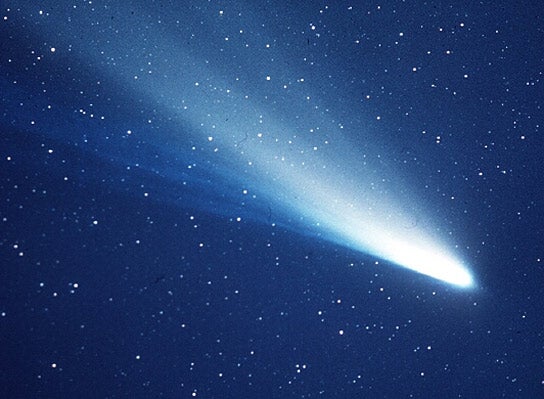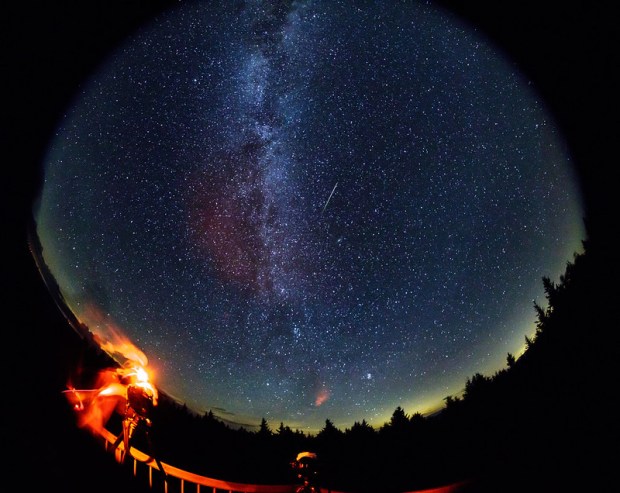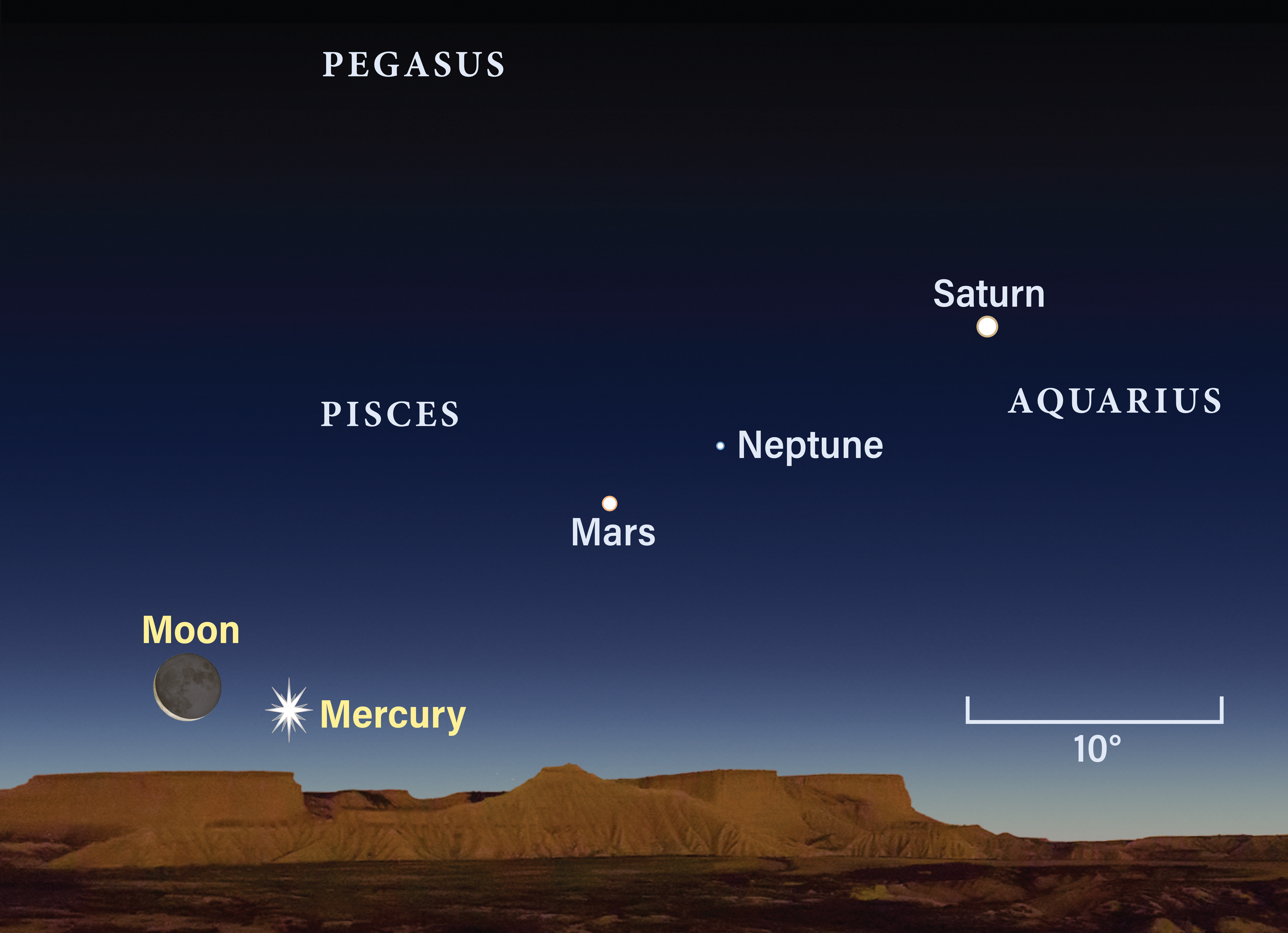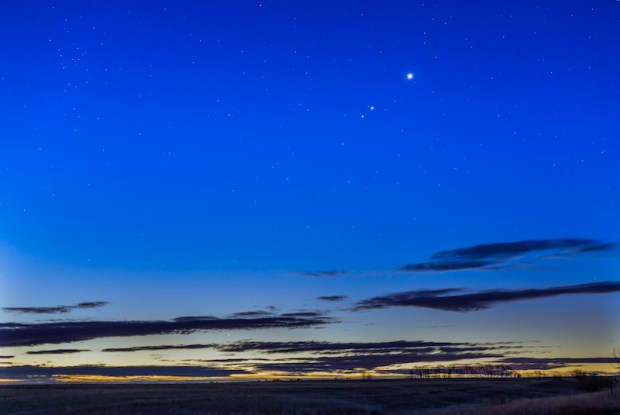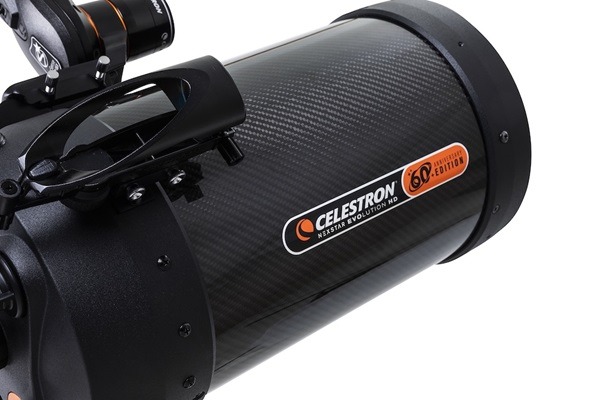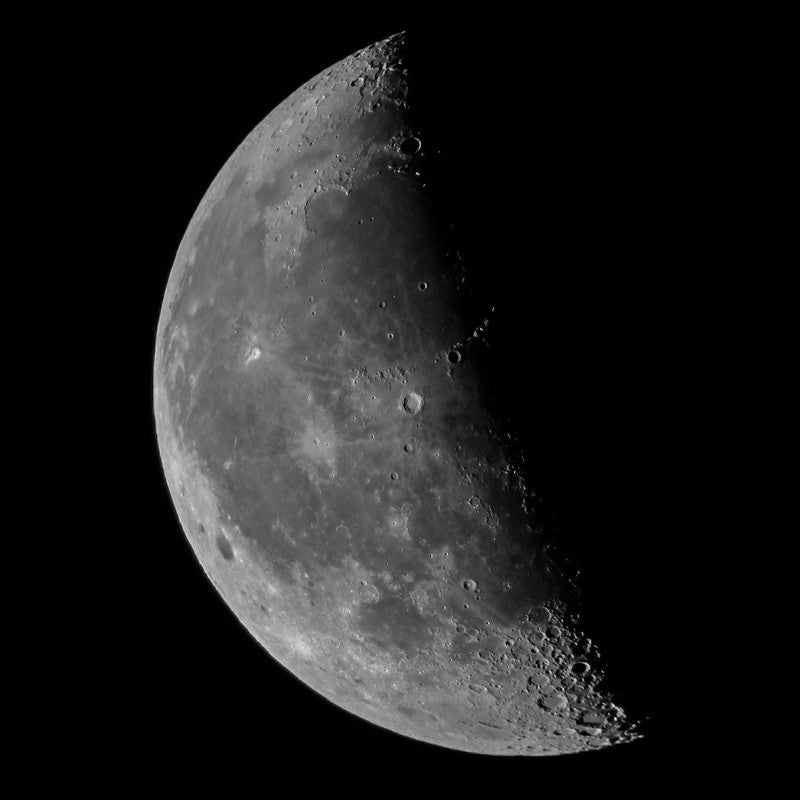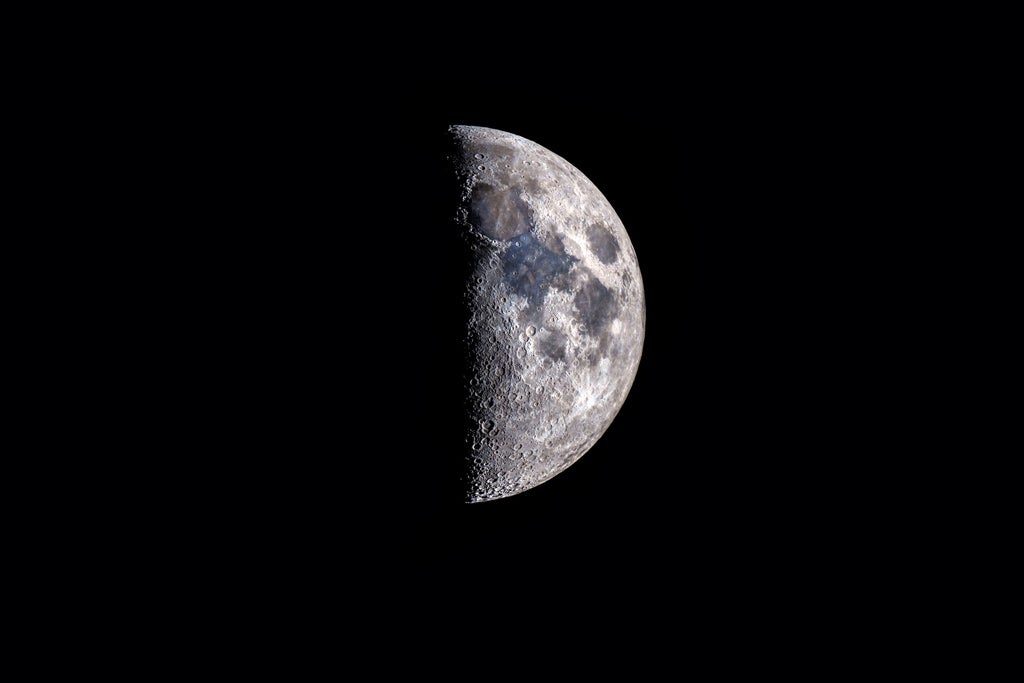
Friday, June 23
The mighty eagle Aquila is rising in the east around sunset. Give it about two hours to begin climbing out of the turbulent air near the ground and look first for its brightest star, magnitude 0.8 Altair. This sparkling luminary anchors one of the three points that make up the Summer Triangle asterism; the other two are Deneb in Cygnus and Vega in Lyra.
Starting at Altair, shift your gaze nearly 8° south-southeast to land on 4th-magnitude Eta (η) Aquilae. Some 3,400 times brighter than the Sun, this star only appears so faint because it is roughly 1,000 light-years distant. It is also a relatively short-period variable star that cycles between magnitudes 3.5 and 4.3 over the course of about a week. So, take note of its brightness compared with the stars around it, and come back every few days to see whether it is currently brightening or fading. It’s an easy and fun variable star to watch!
If you have a large telescope at your disposal — 10 inches or more — Comet 237P/LINEAR is lurking nearby. Last recorded at 12th magnitude, it is faint but holding steady. You can look for the small fuzzball 4° southeast of Eta tonight; it’s likely to appear round, almost like a tiny galaxy or distant globular cluster, because its tail is so small as to be unnoticeable. The comet will continue to swing up and under Eta over the course of the week, so while conditions are good, feel free to watch it night after night.
Sunrise: 5:32 A.M.
Sunset: 8:32 P.M.
Moonrise: 10:28 A.M.
Moonset: —
Moon Phase: Waxing crescent (26%)
*Times for sunrise, sunset, moonrise, and moonset are given in local time from 40° N 90° W. The Moon’s illumination is given at 12 P.M. local time from the same location.
Saturday, June 24
Saturn soars above the southeastern horizon a few hours before sunrise this morning, hanging roughly in the middle of the watery constellation Aquarius the Water-bearer. The magnitude 0.7 planet should be easy to spot against the backdrop of fainter stars in the region.
Saturn’s two-toned moon Iapetus reaches western elongation today, also shining at its brightest (roughly 10th magnitude) as its lighter side now faces Earth. You can locate it early this morning some 9′ west of Saturn — that’s quite far compared to its other moons! By contrast, Titan (easy to spot at some 2 magnitudes brighter) lies only 3′ east of Saturn. Because it’s easier to identify, try finding Titan first, then estimating its distance and looking three times as far on the other side of Saturn to try hunting down Iapetus.
Several faint moons also cluster closer to the planet: The easiest to see are 10th-magnitude Tethys (just east of the eastern edge of the rings), Dione (just west and above the western edge of the rings), and Rhea (farther west than Dione and in line with the western edge of the rings).
Sunrise: 5:32 A.M.
Sunset: 8:33 P.M.
Moonrise: 11:29 A.M.
Moonset: 12:21 A.M.
Moon Phase: Waxing crescent (35%)
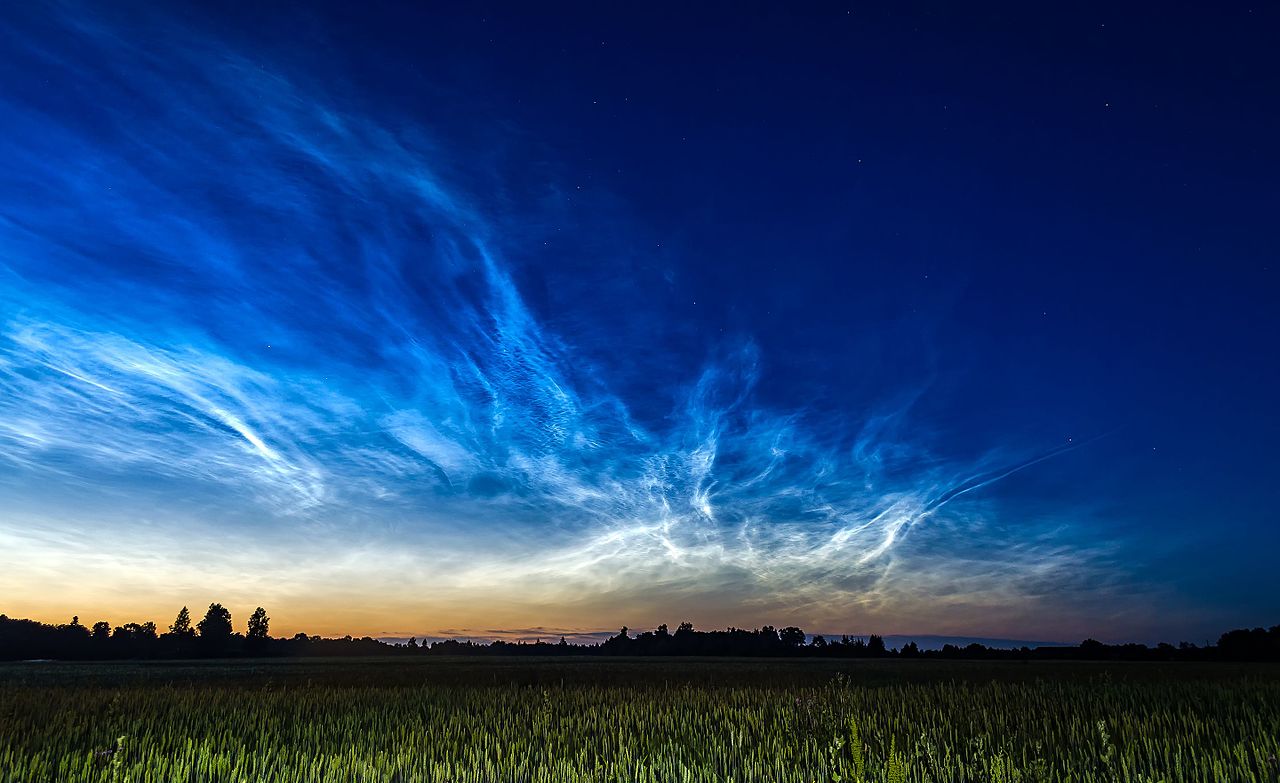
Sunday, June 25
Spring and summer are the best times of year to look for noctilucent clouds hanging in the sky long after dark. These “night-glowing” clouds form high in the atmosphere, some 10 times higher than cirrus. They’re composed of ice crystals that form around high-flying dust — and because they’re so far above the surface, they can continue to reflect sunlight even after the Sun has set from your location. In fact, it’s not unusual to see displays late into the night, even after midnight and into the early-morning hours.
These clouds are largely visible to those above 55° north latitude. Step outside after dark and look north to see if you can spot these wispy, silvery clouds long after any “normal,” lower clouds have turned into dark splotches in the night sky. You don’t need any equipment to enjoy noctilucent displays, though a pair of binoculars can help bring out finer details in the clouds if you wish. If you’re experienced with nightscape or time-lapse video, noctilucent clouds make excellent subjects, so bring your tripod and camera (or even just your smartphone) with you!
Sunrise: 5:33 A.M.
Sunset: 8:33 P.M.
Moonrise: 12:28 P.M.
Moonset: 12:42 A.M.
Moon Phase: Waxing crescent (44%)
Monday, June 26
The Moon reaches its First Quarter phase at 3:50 A.M. EDT. Rising in the afternoon and visible before and after sunset, our satellite is ripe for observation this evening, as First Quarter is one of the best times to enjoy its varied face.
The key is to focus first on the terminator, the line separating lunar night from day. At this phase, the terminator splits the face of the Moon in half, highlighting the cratered southern hemisphere — large pockmarks such as Hipparchus and Albategnius in particular stand out. You’ll also see the rugged Apennine Mountains that form the southeastern rim of Mare Imbrium in the north; they lie just southwest of the large blotch of Mare Serenitas, now easily visible in the lunar northeast.
You can enjoy the Moon tonight with just your naked eyes, or pull out binoculars or a telescope to zoom in on details in the terrain. If the moonlight is too bright through the eyepiece, you can try a few tricks, including bumping up the magnification — which reduces the area you’re viewing and cuts down on the light streaming through — or even wearing sunglasses to observe. Moon filters, which screw into your eyepiece, are another great option if you frequently observe the Moon.
Sunrise: 5:33 A.M.
Sunset: 8:33 P.M.
Moonrise: 1:29 P.M.
Moonset: 1:03 A.M.
Moon Phase: Waxing gibbous (54%)
Tuesday, June 27
The distant gas giant Neptune has come to a near-stop close to the 6th-magnitude star 24 Piscium. It lies just 1° north of this star and will sit here for the next few weeks; the planet officially reaches its stationary point on the 1st next month.
The best time to look for Neptune is in the early-morning hours between about 1 A.M. and roughly an hour or two before dawn. The planet rises in the east just after midnight and is a faint magnitude 7.8, requiring binoculars or a small telescope to spot it. Its disk is just 2″ across and will appear as a “flat,” blue-gray star through the eyepiece. Together with 24 Psc, it forms a roughly equilateral triangle with 20 Psc just northeast of 24 Psc.
Zoom out from this picture and you can also spot one of the more famous asterisms in the sky: the Circlet of Pisces. It lies at the western end of Pisces and comprises seven stars (moving clockwise from the first): Lambda (λ), 19, Iota (ι), Theta (θ), 7, Gamma (γ), and Kappa (κ) Piscium. In particular, you may notice that 19 Psc, also cataloged as TX Psc, is incredibly red, even to the naked eye. This star contains plentiful carbon in its atmosphere, which scatters away all light but the red wavelengths, which are the only ones that reach our eyes. You can enjoy TX’s ruby-red hue even more through binoculars or any telescope.
Sunrise: 5:33 A.M.
Sunset: 8:33 P.M.
Moonrise: 2:32 P.M.
Moonset: 1:23 A.M.
Moon Phase: Waxing gibbous (64%)
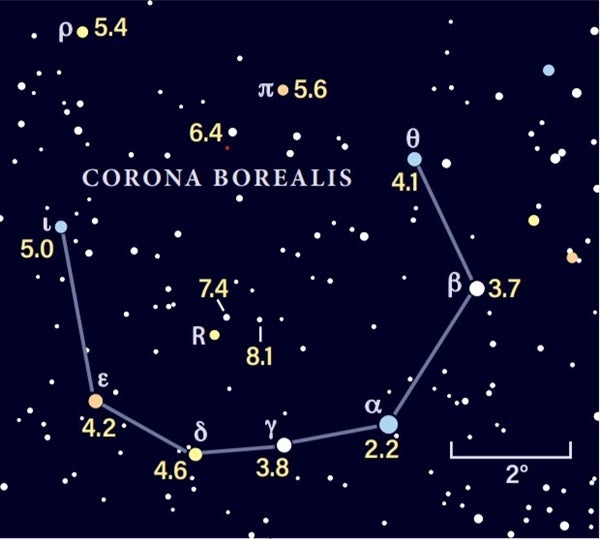
Wednesday, June 28
This is another day for early risers, as the constellations Hercules and Corona Borealis feature prominently in the western sky in the hours before sunrise. With no Moon visible at this time, it’s a great opportunity to get in some deep-sky-gazing, particularly as Hercules houses the showpiece globular cluster M13 and chances to view it are dwindling as the summer season progresses.
This bright, big globular shines at magnitude 5.8 and spans almost 20′ on the sky. It’s located just 2.5° due south of magnitude 3.5 Eta Herculis and can be visible to the naked eye under good conditions. However, it really stands out in binoculars or a telescope, as increasing magnification will progressively begin to resolve the fuzzball into myriad stars — of which it contains hundreds of thousands! This ancient cluster of stars lies some 25,000 light-years away.
Drop down from there and you’ll find the small, curving constellation Corona Borealis, which sits above the larger Boötes and its bright star, Arcturus. Corona Borealis is home to a famous variable star called R Coronae Borealis, or R Cor Bor, which lies about one-third of the way from Epsilon (ϵ) to Theta CrB. R Cor Bor is an unpredictable variable that can change its brightness dramatically and without warning. It’s usually a 6th-magnitude star, but use the chart above to see if you can determine its current brightness!
Sunrise: 5:34 A.M.
Sunset: 8:33 P.M.
Moonrise: 3:38 P.M.
Moonset: 1:46 A.M.
Moon Phase: Waxing gibbous (73%)
Thursday, June 29
Let’s return to Saturn this morning to see its moons’ orbits in action. Large, bright Titan has moved from its previous position east of the planet to a more southerly location, passing due south of the disk right around the time it rises for the eastern half of the U.S. Over the next few hours, the moon moves slowly west, lying southwest of the planet’s center as the morning progresses.
Now Tethys, Dione, and Rhea are all lined up nicely to Saturn’s west, in that order from closest to farthest. And Iapetus still lies far to the west; it doesn’t appear to have moved much from its spot earlier this week.
Saturn isn’t the only gas giant hanging in the morning sky, though it is the first. Mighty Jupiter rises later — shortly after 2 A.M. local daylight time — with Europa crossing the disk for those on the East Coast that are able to catch a good glimpse amid the turbulent air near the ground. The moon slips off the disk around 3 A.M. EDT and keeps moving west. Callisto lies alone to the east of the planet, even as Europa joins Io (closer) and Ganymede (farther) to the west.
Sunrise: 5:34 A.M.
Sunset: 8:33 P.M.
Moonrise: 4:48 P.M.
Moonset: 2:11 A.M.
Moon Phase: Waxing gibbous (82%)
Friday, June 30
Mars and Venus have come a long way from their positions earlier this month, when they slid through the Beehive Cluster in Cancer. The two bright planets continue to dominate the evening sky, both now in Leo to the west of bright Regulus, almost in a straight line with the star. They’re about 15° high in the western sky an hour after sunset and set around 11 P.M. local daylight time, lingering long after twilight and affording you some quality observing. If you remember their configuration earlier in the month, you’ll note they’ve closed the gap between them and now stand just 3.5° apart.
Venus is far brighter at magnitude –4.6, while Mars is magnitude 1.7. Focusing in on Venus first, Earth’s sister planet now shows off a disk that is 32 percent lit and 33″ wide. Mars, meanwhile, appears fully illuminated but is only 4″ across. Although the planets don’t set for a few hours after sunset, you’ll want to catch them earlier rather than later, before they sink too close to the horizon.
As more stars pop out against the darkening sky, you may also see famous asterisms such as the Sickle of Leo and the Big and Little dippers begin to appear nearby.
Sunrise: 5:35 A.M.
Sunset: 8:33 P.M.
Moonrise: 6:01 P.M.
Moonset: 2:42 A.M.
Moon Phase: Waxing gibbous (90%)

Sky This Week is brought to you in part by Celestron.


